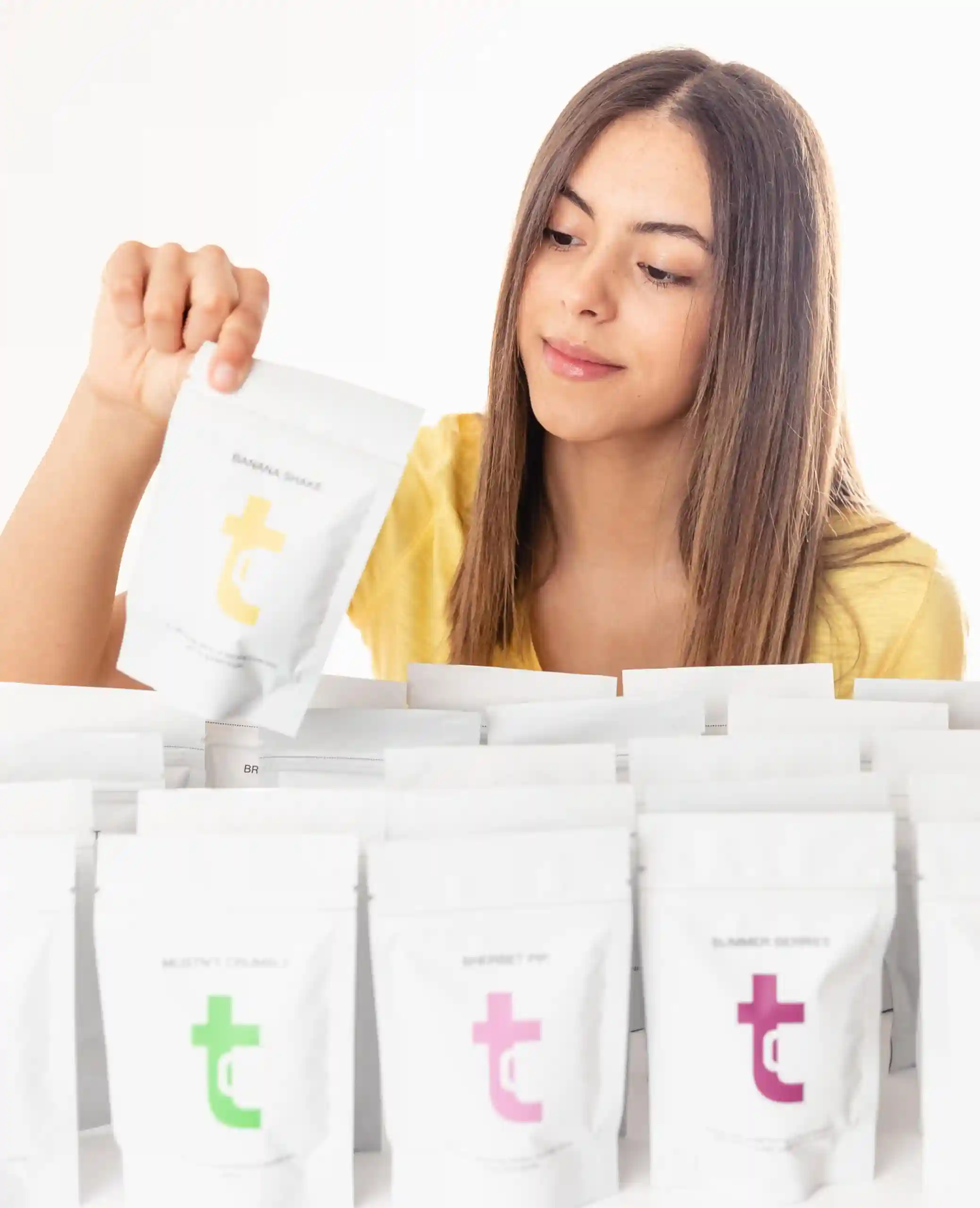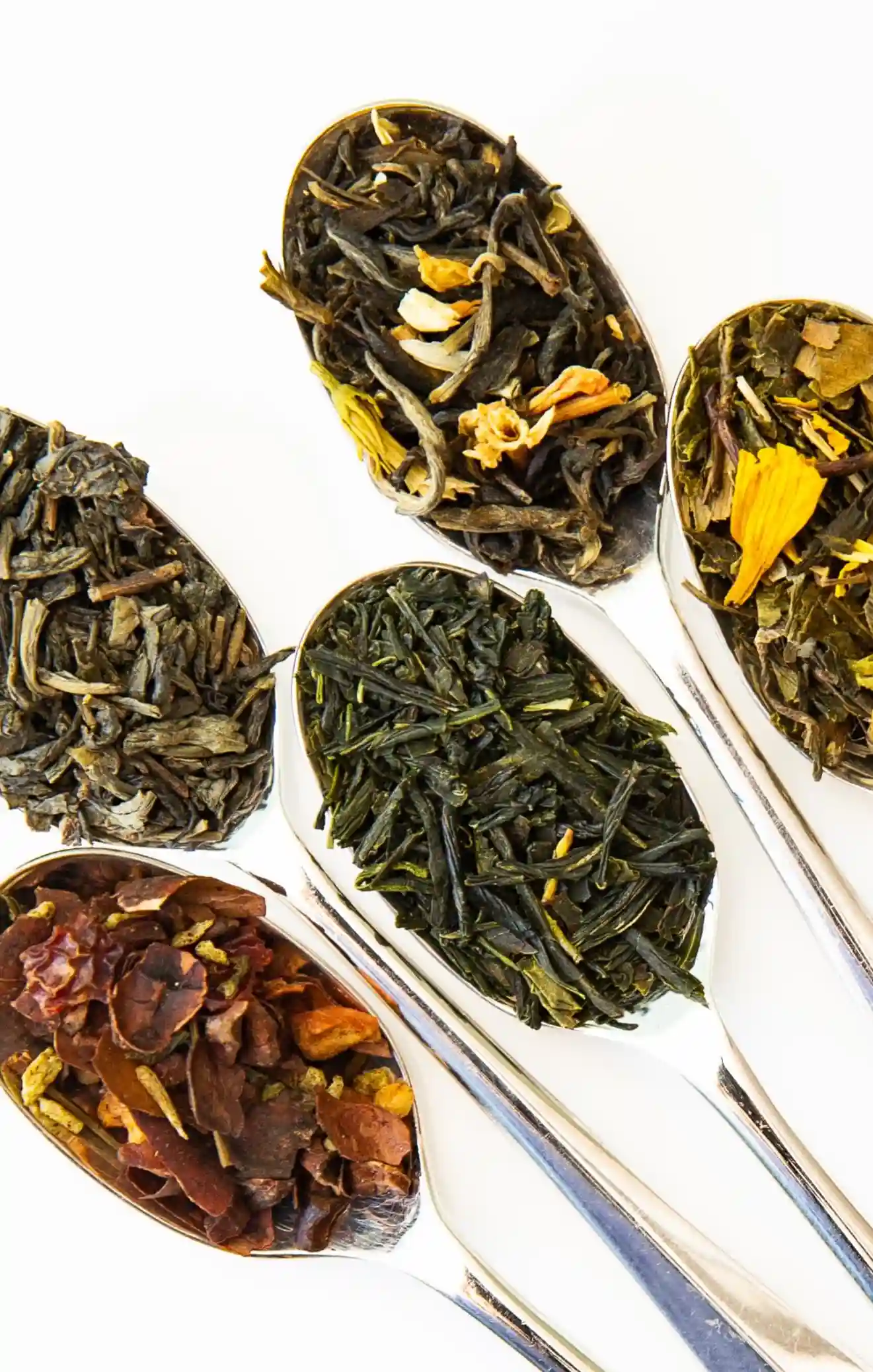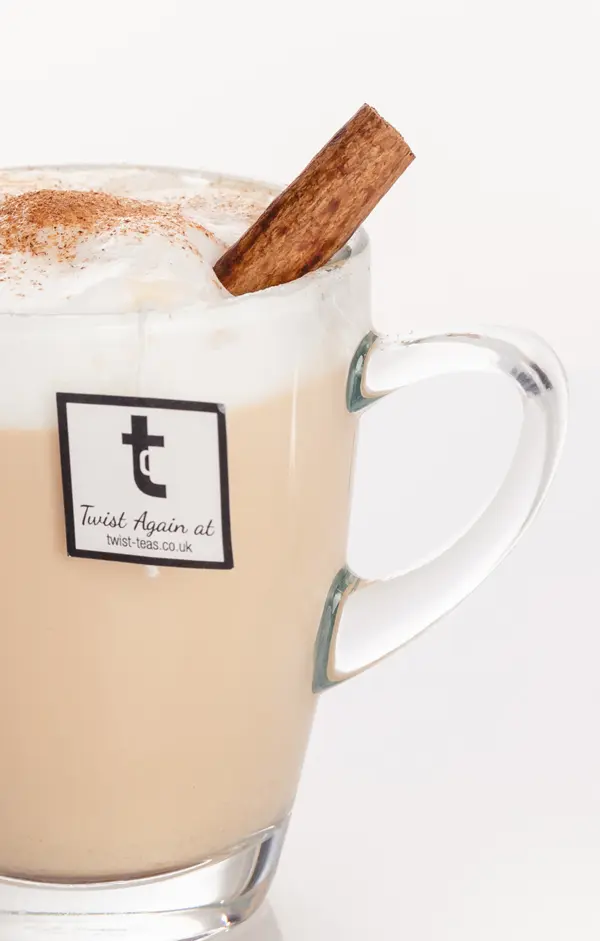Charity, News
We are delighted to announce the return of our Remembrance Caddies, in support of the Royal
British Legion Poppy Appeal.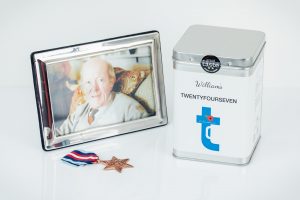
At Twist Teas we have always supported this worthy cause and feel it is particularly important this year, given the challenges we all currently face, to honour the men and women who served and continue to serve selflessly in our armed forces.
On a personal note, Remembrance Day holds a special place in our hearts at Twist Teas. Grandpa William (‘Bill’) was awarded with the Arctic Star. The Arctic Star is awarded to members of the British Armed Forces and Merchant Navy for services in World War II. Claire’s son William, named after his Great Grandpa, will proudly tell anyone, who has a minute, about the brave and selfless endeavours of those who served on Arctic convoys north of the Arctic Circle, and of the severity of the conditions they faced. Thank you to all the brave men and women from near and far who sacrificed so much for our freedom.
To purchase a Remembrance Caddy for yourself or as a gift, simply nominate the recipient’s name and select your favourite Twist Tea blend. The recipient will receive a personalised poppy caddy containing 50 Twist teabags and can order refills at a 20% discount.
All profits from this product go to The Royal British Legion.
Gifts, News
Christmas is fast approaching. In a year when many of us haven’t been able to share special moments with loved ones, you may be thinking of adding a little personal touch with a Twistmas gift. We’ve got you covered with 5 simple, yet effective, personalised gifts for your family and friends.
Pick & Mix: Tasting Menu
This is the perfect inexpensive but thoughtful gift. A personalised tasting menu with a selection of 6 different blends, chosen specifically by you. This is the ideal gift for that person you just don’t know what to get, but want to be certain it’ll make them smile.
Twistmas is a time for sharing… but we all know someone who finds it hard to share the love when it comes to their favourite tea. We have the solution with this personalised caddy . Make sure there is no confusion over who this tea belongs to by putting the recipient’s name right there on the front of the caddy. The best thing about this gift is that they can use it all year, easily buying refills. Choose their favourite blend, add their name and we’ll take care of the rest – you can even get the loose leaf equivalent instead. All you have to do is make sure they’re not looking when you steal one! (We won’t tell if you don’t.)

No one will be left unsatisfied with this Pyramid Tasting Menu Caddy. Bring Christmas cheer to all by sharing this caddy full of sixteen of our favourite blends, each beautifully presented in an individual pyramid box.

Pick & Mix: The Six Pack
Personally curate a selection of six delicious teas, perfectly suited to the tastes of that special someone in your life. With over 50 different Great Taste Awards-winning, hand blended teas to choose from, you’re bound to find the perfect combination. Just to add to the thoughtfulness, make sure they think of you with every brew by adding your own personal message to the caddy.
This thoughtful stocking filler contains 3 attractive pyramid boxes of our Christmas blends. It doesn’t matter if you’ve been naughty or nice, everyone deserves this adorable gift. Perfect to fill up a stocking or as a little Christmas favour waiting for your guests at the dinner table, this makes a lovely well thought-out gift.


Turn your Christmas into a Twistmas this year. Hop over to the shop and place your orders in by December 21st to ensure delivery in time for Christmas.
Universitea
The history of blending tea has a shady past. As tea became increasingly popular in Britain in the nineteenth century, unscrupulous tea merchants added all kinds of extra ingredients, some inedible, to bulk out their stocks and increase their profits[i]. Now that tea is regulated, drinkers have no need to be afraid! Modern tea blending is about achieving a good balance of flavour, aroma, and colour.
The origins of Twist started with blending and experimenting with various combinations of teas. Long before Twist was conceived, Nicky would pop a couple of different tea bags into a pot to make new flavours. As Claire grew up, she thought this was the normal thing to do. Consequently, when it was time to design Twist’s many tea blends, Nicky and Claire called on their years of experimentation for inspiration.
Twist Teas blends are fabulous in their own right, but it doesn’t hurt to further experiment, every so often, does it? We thought we would get back into the Twist kitchen on a quiet Friday afternoon and get mixing and see what we could come up with…
Which teas can you mix together?
The options are endless with tea blending and there is no right or wrong when it comes to personal taste. You might like to consider classic flavour pairings such as peppermint and chocolate or strawberries and cream, or you can throw the rule book out and trust your instincts. When it comes to quantity, you can be scientific about it, measuring out exact amounts of tea to create your new concoctions, or be as random about it as you like. Experiment using both tea bags and hand-blending loose-leaf tea and see which you think is best. Try your blends hot, cold, served with ice, brewed with water or milk: be adventurous!
For our small tea blending experiment, we combined two or more blends with like flavours, complementary flavours, and contrasting flavours. Read on for a few suggestions we think you will love.
Black tea blend recipes
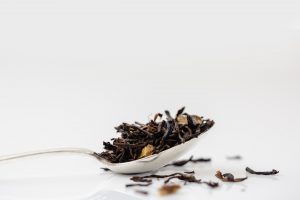 After water, black tea is one of the most popular beverages in the world. Black tea is a drink made from the oxidised leaves of the Camellia sinensis plant. To make black tea, the leaves are picked and withered before being rolled, oxidised (exposed to air), and finally, dried. The term ‘black tea’ comes from the colour of the leaves once oxidised. It is called black tea whether we add milk or not. Black tea varies greatly in terms of flavour, depending on the conditions of the soil and climate in which it is grown. The robust, full-bodied nature of black tea means it blends well with many flavours including mint, citrus, and even floral flavours.
After water, black tea is one of the most popular beverages in the world. Black tea is a drink made from the oxidised leaves of the Camellia sinensis plant. To make black tea, the leaves are picked and withered before being rolled, oxidised (exposed to air), and finally, dried. The term ‘black tea’ comes from the colour of the leaves once oxidised. It is called black tea whether we add milk or not. Black tea varies greatly in terms of flavour, depending on the conditions of the soil and climate in which it is grown. The robust, full-bodied nature of black tea means it blends well with many flavours including mint, citrus, and even floral flavours.
Morning Blast
Get your morning off to a flying start by blending Breakfast Boost with a small amount of Propermint. Add milk if desired. The combination of refreshing peppermint with a premium black tea blend that contains yerba mate for a smooth caffeine hit and Siberian ginseng for enhanced mental performance will be sure to knock your socks off…in a good way! If you prefer a greater peppermint hit, increase the proportion of Propermint in your blend.
Blends: 3 parts Breakfast Boost + 1 part Propermint
Method: Infuse both blends separately in boiling water for 3-5 minutes. Remove tea. Combine Propermint with Breakfast Boost slowly until desired level of mintiness has been reached. Serve with or without milk.
English Rose
Add some sophistication/elegance to your afternoon tea by blending our Afternoon Perks with Royal Tea. Afternoon Perks is a light bodied blend of Ceylon and Darjeeling black teas, the perfect black tea base for imbuing with delicate rose and warming cinnamon… This aromatic blend would be equally at home in Buckingham Palace or enjoyed in your kitchen, with or without milk.
Blends: 2 parts Afternoon Perks + 1 part Royal Tea
Method: Infuse both blends in boiling water for 3-5 minutes. Leave the Royal Tea in for longer for a stronger cinnamon and rose flavour. Remove tea and combine. Serve with or without milk.
Earl Magnificent
The combination of black tea and citrus has been enjoyed for generations in the form of the classic Earl Grey blend. Thought to be named after Charles Grey, the 2nd Earl Grey, and British Prime Minister during the 1830s, Earl Grey tea is reputed to have been created to disguise the flavour of the water at the Earl’s home. If you are looking to increase the citrus flavour of your Earl Grey, infuse your favourite Twist Teas Earl Grey blend for 3-5 minutes, depending on personal taste, and top with our Orange & Lemon tisane.
Blends: 3 parts Classic Earl or Earl Great + 1 part Orange & Lemon
Method: Infuse both blends separately in boiling water for 3-5 minutes. Leave the Orange & Lemon to brew for longer if a stronger orange flavour is desired. Remove tea and combine. Serve with or without milk.
To Russia With Love
Russian Caravan is a tea blend that was created to appeal to nineteenth century traders undertaking the arduous task of importing tea from China to Russia via ‘caravans’ of camels. Traditionally a blend of Chinese teas such as oolong, keemun and lapsang souchong, Russian Caravan tea has a full-bodied flavour. To make your own Russian Caravan with a Twist, blend our Classic Earl, with a small amount of Wholly Smoke. A word of warning: use Wholly Smoke sparingly as the smoky aroma could overwhelm the Classic Earl.
Blends: 3 parts Classic Earl + 1 part Wholly Smoke
Method: Infuse both blends separately in boiling water for 3-5 minutes. Remove tea. Combine Wholly Smoke with Breakfast Boost slowly until desired level of smokiness has been reached. Serve with or without milk.
Green tea blend recipes
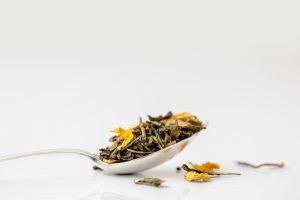 Like black tea, green tea is a type of drink made from the leaves of the Camellia sinensis plant. Unlike black tea, however, green tea leaves are steamed or pan-fried soon after picking to avoid oxidation. It is thought that the lack of processing is why green tea is so high in antioxidants, compounds found in certain foods that are thought to help protect our bodies from disease. Green tea has been enjoyed for centuries both for its health benefits and as a stimulating drink. Studies have shown that L-theanine, an amino acid found in green and black teas, and caffeine work together to reduce stress and improve concentration.
Like black tea, green tea is a type of drink made from the leaves of the Camellia sinensis plant. Unlike black tea, however, green tea leaves are steamed or pan-fried soon after picking to avoid oxidation. It is thought that the lack of processing is why green tea is so high in antioxidants, compounds found in certain foods that are thought to help protect our bodies from disease. Green tea has been enjoyed for centuries both for its health benefits and as a stimulating drink. Studies have shown that L-theanine, an amino acid found in green and black teas, and caffeine work together to reduce stress and improve concentration.
The umami flavour of green tea lends itself well to combining with fruit, mild spices, and peppermint.
Supreme Sencha
One of Japan’s favourite teas is Sencha Green tea. Sencha Green tea is made from the unfermented Camellia sinensis leaf, which is steamed, rolled, and dried. Sencha Green tea has a clean, slightly grassy taste, derived in part from the steaming process. The flavour of green tea is not to everyone’s taste at first, so combining it with another tea is a great way to start enjoying the health benefits of green tea. Try a 50/50 blend of our Sencha Green with Cocoa-Nut Green. Not only will you enjoy the health benefits of green tea, but you will also enjoy the delicious mix of toasted rice, coconut, and cocoa at the same time!
Blends: 1 part Sencha Green + 1 part Cocoa-Nut Green
Method: Infuse both blends together in cooled boiled water (80°C) for 3-5 minutes. Remove tea. Serve without milk.
Autumn Apple Crumble
Chunmee is a popular Chinese green tea. The word chunmee is Chinese for ‘Precious Eyebrows’, due to the shape the green tea leaves take on once hand rolled. Chunmee tea is made from the unfermented Camellia sinensis leaf, which is pan fried, rather than steamed. We combined our Chunmee Green with a concentrate of Mustn’t Crumble brewed with a cinnamon stick for added spice. The result was a warming sugar-free blend packed with antioxidants that is equally delicious hot or cold.
Blends: 2 parts Chunmee Green + 1 part Mustn’t Crumble
Method: Infuse the Chunmee Green in cooled boiled water (80°C) for 3-5 minutes. Infuse the Mustn’t Crumble in a small amount of boiling water and leave to brew for up to 10 minutes. Combine the two blends and serve without milk.
Iced Summer Greens
Did you know that green tea tastes fabulous as an iced tea? During warm summer months we don’t always fancy a hot drink and endless glasses of water can get a bit boring. Try blending our Refresher Green together with Propermint, before adding ice, sparkling water and a sprig of mint. You’ll have a refreshing pick me up with the antioxidants of green tea and the cooling menthol of peppermint. Don’t forget that green tea contains caffeine, so you might not want to drink too much of this blend before bedtime.
Blends: 2 parts Refresher Green + 1 part Propermint
Method: Infuse the blends separately, Refresher Green in cooled boiled water (80°C) and Propermint in boiling water for 3-5 minutes. Cool and combine the teas, add ice and top with sparkling water. Serve without milk.
Fruit and herbal tea blend recipes
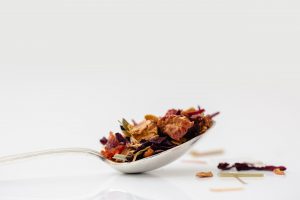 While fruit and herbal blends are not ‘teas’ in the technical sense as they do not come from the Camellia sinesis plant, they are often brewed in the same way as tea. Offering various flavours and health benefits, there are endless options when it comes to blending herbal teas.
While fruit and herbal blends are not ‘teas’ in the technical sense as they do not come from the Camellia sinesis plant, they are often brewed in the same way as tea. Offering various flavours and health benefits, there are endless options when it comes to blending herbal teas.
Chamomile Kick
Chamomile is a herb that produces daisy-like flowers. The tea brewed from the dried Chamomile flowers has been used for generations as a natural treatment for insomnia. Twist’s Chamomile Yawn is one of our most popular herbal teas and has a mellow, honey-like sweetness with floral undertones. Add a kick to your favourite bedtime beverage by combining our Lemon & Ginger with Chamomile Yawn. The lemon peel in Lemon and Ginger complements the lemon balm of Chamomile Yawn, while the ginger adds heat to the blend. A note of warning: the ginger can overpower the chamomile, unless used sparingly!
Blends: 2 parts Chamomile Yawn + 1 part Lemon & Ginger
Method: Infuse both blends in boiling water for 3-5 minutes. Enjoy hot or cold (by pouring over ice). Serve without milk.
Super Berry Green
Add the sweet, fresh flavours of strawberry, raspberry, and hibiscus to a small portion of delicate green tea for a refreshing summer’s drink. We cold-brewed both teas and combined our Summer Berries with some Refresher Green tea and threw in some ice and fresh fruit for good measure. Cold brewing tea is a slow and gentle process that produces sweeter notes and better clarity of taste. Brewing your tea in cold, rather than hot water, results in less astringency or bitterness, meaning you can leave your tea bags or leaves in as long as you like and keep topping up the water throughout the day.
This combination would also work well with our Apple & Blueberry blend. Another way to increase your water intake and enjoy the health benefits of green tea at the same time!
Blends: 2 parts Summer Berries + 1 part Refresher Green
Method: Infuse both blends in cold water and brew for 3-5 minutes. Remove tea, combine, and serve on ice without milk.
Rooibos tea blend recipes
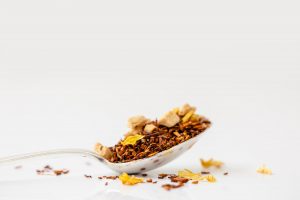 Rooibos is a herb that is grown in the Cederberg region near Cape Town, South Africa. Pronounced ‘Roy-Boss’, this rich, nutty brew with a dark copper hue is super-charged with health benefits. It is naturally caffeine-free and bursting with antioxidants. Rooibos is also low in tannins, a chemical often present in less premium black tea and green tea that can cause a bitter flavour and interfere with iron absorption.
Rooibos is a herb that is grown in the Cederberg region near Cape Town, South Africa. Pronounced ‘Roy-Boss’, this rich, nutty brew with a dark copper hue is super-charged with health benefits. It is naturally caffeine-free and bursting with antioxidants. Rooibos is also low in tannins, a chemical often present in less premium black tea and green tea that can cause a bitter flavour and interfere with iron absorption.
While Rooibos can be enjoyed on its own, or with a little milk, it also works well as a base upon which other flavours can be added.
Lemon Tranquility
This blend is an excellent choice to be enjoyed at any time of the day as it is completely caffeine free. Mix one third Pure Rooibos with two thirds of Lemon & Ginger and you will have a brew that is packed full of the health benefits of both rooibos and ginger, with added Vitamin C from lemon. Although the rooibos calms the ginger, there is still plenty of heat in this delicious blend.
Blends: 1 part Pure Rooibos + 2 parts Lemon & Ginger
Method: Infuse both blends in boiling water for 3-5 minutes. Remove the tea and combine. Enjoy hot, or cold on ice with a slice of fresh lemon. Serve without milk.
Caffeinate your Chocolate Cake
Tea and cake is a timeless combination. The mixologists at Twist Teas had already cottoned on to this idea with rooibos blend Chocolate Cake but we thought, why not caffeinate our chocolate cake for an added energy boost! Infuse a Twenty Four Seven tea bag for 2 minutes for a strong, malty brew, and pop in a Chocolate Cake tea bag to the mix. Our Chocolate Cake tea is a rooibos blend, so you can leave that in as long as you like. Rooibos is completely lacking in tannins, meaning it does not become over-brewed and bitter. The result is a rich amber liquid with a subtle chocolatey aroma. The addition of milk enhances the chocolate flavour and adds a delicious creaminess.
You can mix Twenty Four Seven with Banana Shake in much the same way. There is a reason a cup of black tea goes so well with a slice of banana bread! To ensure the delicate banana flavour shines through, make sure you use less black tea and more Banana Shake in this blend.
Blends: 1 part Twenty Four Seven + 1 part Chocolate Cake
Method: Infuse both blends in boiling water for 3-5 minutes. For a stronger chocolate flavour, leave your Chocolate Cake to brew for up to 10 minutes. Combine and top with frothy milk.
How can I mix my own tea blends?
Twist Teas have several convenient formats for those keen to have a go at tea blending for themselves. You can start with a Pick and Mix Tasting Menu and curate your own selection of six delicious teas. Twist also has larger Pick and Mix caddies, for those wishing to start with a larger quantity. These caddies offer a choice of up to four or six different blends with eight bags (or equivalent of loose-leaf tea) per blend.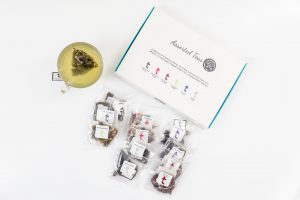
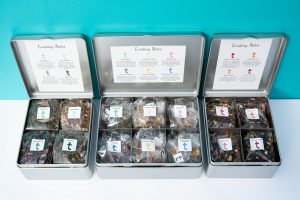
Pick and Mix Tasting Menu Pick and Mix Caddies
[i] Battle, W 2017, The World Tea Encyclopaedia, Matador, Knebworth Beauchamp, UK, p. 70.
Universitea
Matcha Green Tea has become hugely popular in recent times. Its prevalence might seem to have sprung from nowhere, but Matcha is a type of Green Tea that has its roots spanning back nearly 1000 years. You’ve probably seen Matcha lattes, Matcha smoothies and Matcha desserts of all kinds popping up in cafes everywhere as well as images of Matcha on your social media feed. So, what is the big deal about Matcha? What does Matcha do for you? Is it really the superfood it is reputed to be?
While we have enjoyed drinking matcha at Twist for some time now, we thought it was time that we explored some of your most pressing Matcha questions:
- What is Matcha?
- What does Matcha do for you?
- What is the best Matcha?
- How do you prepare Matcha tea?
- Matcha recipes
What is matcha?
Matcha, otherwise known as Matcha Green Tea, or Matcha powder, is the finely ground powder of the Japanese Tencha Green Tea leaf. Farmers grow matcha by covering their Tea plants for approximately twenty to thirty days before harvest to avoid direct sunlight. This increases chlorophyll production, boosts the amino acid content, and gives the plant a darker green hue. Once the Tea leaves are harvested, the stems and veins are removed, and the leaves are dried before being ground into a fine powder known as Matcha.
Matcha is historically tied to the Japanese tea ceremony and zen practices including meditation. It is thought that tea was first introduced from China to Japan in early in the 9th century. But it was not until a Buddhist monk named Esai brought Chinese methods of meditation and of preparing tea to Japan in 1187 that the tea ceremony took root. Having studied with Chinese Buddhists, Eisai had learned that tea was used to promote health and to stay alert during meditation.
How is Matcha different from Green Tea?
Matcha comes from the Camellia sinensis plant, as does Green Tea. Therefore, Green Tea and Matcha share many nutritional qualities. However, this is where the similarities end. The distinctive way in which Matcha Green Tea is cultivated and then processed results in Matcha having a unique chemical composition. The period of shade-growth increases the plant’s levels of chlorophyll and antioxidant substances, resulting in nutrient-dense leaves. One serving of matcha provides approximately 10 times the nutrients that a serving of Green Tea does.
The difference in preparation of Green Tea versus Matcha also sets these brews apart. With Green Tea you remove the leaves after they have infused in hot water, before you drink it. With Matcha you ingest the entire leaf, meaning none of the health benefits of the Green Tea are lost. Matcha, therefore, packs in a more concentrated number of antioxidants and beneficial plant compounds.
What does Matcha taste like?
You might have heard the word umami being bandied about when people describe the taste of Matcha. Umami simply means a ‘pleasant savoury taste’. A good quality Matcha, such as our Pure Matcha, has a slightly sweet, yet earthy/umami flavour. Because we use premium matcha powder there should be no bitterness, and therefore no need to add sugar. But if you prefer your matcha with milk this will sweeten it slightly. Pure Matcha has a vibrant green colour and will provide you with an energy boost minus the jitteriness of coffee.
Why does some Matcha taste so bad?
There are different grades of Matcha. Some less premium tea brands may offer culinary grade Matcha, rather than premium or ceremonial grade, meaning there will be a bitterness present in your brew. This is because older, tougher tea leaves are selected for culinary grade Matcha, whereas younger, sweeter tea leaves are used to make ceremonial and premium grade Matcha. As the name suggests culinary grade Matcha is best for cooking with, while premium and ceremonial grade Matcha are best for drinking.
In addition, the temperature and quality of the water used can affect the flavour of your Matcha. If you pour boiling water directly onto your Matcha powder you can burn it. Instead, use slightly cooled water (approximately 80 degrees Celsius). Filtered water, such as with a Brita filter as used by the UK Tea Association, will give the best result, but plain tap water is fine too.
If you have chosen a top grade Matcha and prepared it using the correct temperature of water and it still doesn’t taste right, you need to check your storage. Once you have opened your Matcha tin we recommend that you store it in the fridge so as not to lose flavour and colour. Twists’ Matcha Tea Sticks solve this problem, offering you an easy single serve per sachet, thereby limiting waste.
What does Matcha do for you?
Make no bones about it, Matcha is a nutrient-dense superfood. Full of health-promoting antioxidant and anti-inflammatory properties, we don’t call Matcha a wonder brew for nothing!
Health benefits of Matcha
Because of the unique way in which Japanese Tencha tea (the tea used for Matcha production) is grown, Matcha is generally high in antioxidants, which help stabilise harmful free radicals and prevent or slow damage to cells. Vitamin C is a powerful antioxidant and studies have shown that Matcha contains double the amount of Vitamin C than that of other Green Teas.
Another group of antioxidants found in Matcha, catechins, also provide several health benefits. Of these catechins, epigallocatechin gallate (EGCG), is highest in quantity. It seems that EGCG can help reduce inflammation, particularly after heart surgery. EGCG has also been shown to have an ‘anti-cancer effect’ on particular cancer types by slowing tumour growth.
Studies have shown that Green Tea in general can promote heart health development as it can reduce LDL (bad) cholesterol, allowing easier transport of blood flow.
Growing Tencha tea in the shade also leads to increased levels of chlorophyll in Matcha, which can reduce inflammation within the body. This can help ease aches and pains, and problems such as acne and swelling. Chlorophyll is also responsible for Matcha’s bright green colour. To ensure that your Matcha contains the highest amount of chlorophyll possible, always choose the greenest Matcha.
Matcha can help improve brain function due to the high levels of L-theanine present in the leaves. L-theanine and caffeine work together to reduce stress and improve concentration. As experienced by Japanese Buddhist monks several centuries ago, Matcha can provide a clear, alert mind with better focus for getting on with the task at hand. The higher levels of l-theanine appear to be another effect of shade-growing and are the reason premium Matcha does not taste bitter.
Green Tea has been shown to enhance weight loss as it has the potential to increase fat burn during exercise. As there are approximately 2 calories per 1 gram of matcha powder and zero sugar content, we can’t think of any reason not to include Matcha as part of a well-balanced diet.
The antibacterial properties present in green tea can help to protect the health of your teeth and gums, as well as preventing skin blemishes. Some people swear by exfoliating regularly with Matcha masks, but we prefer to drink our Matcha!
In recent times the anti-viral properties of Green Tea have become of great interest, particularly with regards to COVID-19. It goes without saying that Green Tea alone is not a cure for Coronavirus, but with its high levels of Vitamin C and other essential nutrients, Green Tea has the potential to greatly boost our immune systems at a time at which we all need it.
While the health benefits of Green Tea have been researched at length, there is scope for further study of Matcha so that we can better understand the benefits offered by this superfood.
Are there any side effects of Matcha?
You might ask, is it safe to drink Matcha every day? The period of growth in the shade increases the production of caffeine by the Camellia sinensis plant. Therefore, Matcha has a higher concentration of caffeine than Green Tea. Possible side effects of caffeine include headaches, insomnia, heart palpitations and an upset stomach. If you think you may be sensitive to caffeine, or if you are pregnant, we recommend that you consult your healthcare professional prior to consuming Matcha.
Caffeine content of Matcha
This is how the average caffeine content of Matcha stacks up against Green Tea and coffee:
Average cup of Green Tea | 33mg |
1 teaspoon Matcha powder | 70mg |
1 shot of espresso coffee | 63mg |
As shown in the table Matcha and coffee can contain similar levels of caffeine (depending on how they are made of course). However, the caffeine in Matcha affects the drinker differently from the way that the caffeine in coffee does. There is a synergy between caffeine and L-theanine (an amino acid present in matcha) which allows for a slow-release of energy. This contrasts with the quick boost of energy followed by a sharp drop in energy often experienced following a strong coffee.
What is the best Matcha?
When it comes to selecting a good quality Matcha, the proof is in the colour. The best Matcha will be bright green in colour and very fine in texture. If the Matcha powder looks dull, it is likely to be of a lesser quality and to taste bitter.
At Twist we are passionate about creating top quality premium Teas that offer something different than our competitors. Every Twist Tea blend is created from the finest, ethically sourced ingredients. Our plastic free Matcha sachets contain Matcha that is hand blended in the UK and hand packed in plastic free packaging. Clearly, we believe our Matcha is the best available, but which Matcha blend is the right one for you?
There are 7 Twist Teas’ Matcha blends to choose from and each offers its own distinct flavour and health benefits.
Pure Matcha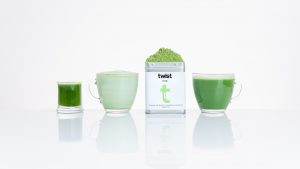
Pure Matcha is 100% unadulterated premium powdered Japanese Tencha Green Tea. It is a great introduction to matcha as it allows the drinker to enjoy the flavour of Matcha in its traditional form. As it is a premium grade Matcha, Pure Matcha is not bitter and has, in fact, an almost sweet flavour. Perfect for drinking with or without milk, added to smoothies, or included in many recipes, Pure Matcha is as versatile as it is delicious.
Beetroot Acai Matcha 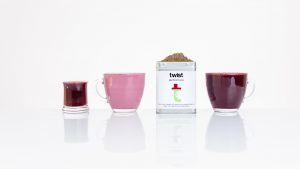 To create this matcha blend, beetroot and acai berries have been added to premium Japanese Matcha powder for additional sweetness. Beetroot Acai Matcha, with its pretty pink hue, will not only satisfy your sweet tooth, but it will also provide you with the health benefits of both beetroot and matcha. We think Beetroot Acai Matcha is divine when prepared as a latte or, for something totally different, as a base for a salad dressing.
To create this matcha blend, beetroot and acai berries have been added to premium Japanese Matcha powder for additional sweetness. Beetroot Acai Matcha, with its pretty pink hue, will not only satisfy your sweet tooth, but it will also provide you with the health benefits of both beetroot and matcha. We think Beetroot Acai Matcha is divine when prepared as a latte or, for something totally different, as a base for a salad dressing.
Cocoa Matcha 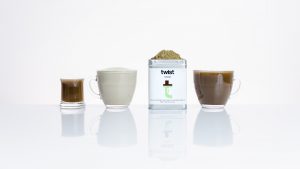 If you like your matcha with a hint of chocolatey sweetness, look no further than our Cocoa Matcha. Pure Matcha, raw cocoa and cocoa powder are combined to produce this delicious blend, and to keep things healthy we have omitted all the sugars you find in chocolate bars. While Cocoa Matcha doesn’t taste like a hot chocolate it will satisfy your sweet tooth and can provide the many benefits of cocoa.
If you like your matcha with a hint of chocolatey sweetness, look no further than our Cocoa Matcha. Pure Matcha, raw cocoa and cocoa powder are combined to produce this delicious blend, and to keep things healthy we have omitted all the sugars you find in chocolate bars. While Cocoa Matcha doesn’t taste like a hot chocolate it will satisfy your sweet tooth and can provide the many benefits of cocoa.
Peppermint Matcha 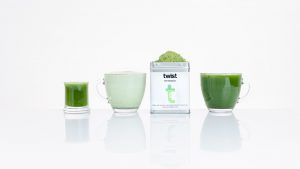 For the perfect post-lunch matcha blend, try our Peppermint Matcha. This emerald green mix of premium matcha, peppermint and maca will help to revive and invigorate you, as well as to freshen your breath. Find out more about the health benefits of peppermint here. Peppermint Matcha is amazing when prepared cold with a generous amount of ice and a sprig of fresh mint.
For the perfect post-lunch matcha blend, try our Peppermint Matcha. This emerald green mix of premium matcha, peppermint and maca will help to revive and invigorate you, as well as to freshen your breath. Find out more about the health benefits of peppermint here. Peppermint Matcha is amazing when prepared cold with a generous amount of ice and a sprig of fresh mint.
Turmeric Cocoa Matcha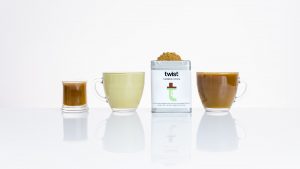 Focus and energise with our Turmeric Cocoa Matcha, a blend of raw cocoa, turmeric, ginger and our premium matcha powder. Peppery with hints of chocolate, this blend strikes a balance between sweetness and spice and lends itself perfectly to our chocolate chia pudding and homemade granola recipes. Discover the many benefits to including turmeric and cocoa in your diet.
Focus and energise with our Turmeric Cocoa Matcha, a blend of raw cocoa, turmeric, ginger and our premium matcha powder. Peppery with hints of chocolate, this blend strikes a balance between sweetness and spice and lends itself perfectly to our chocolate chia pudding and homemade granola recipes. Discover the many benefits to including turmeric and cocoa in your diet.
Turmeric Matcha 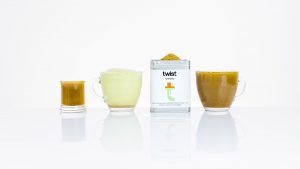 Here is a blend for those who like their Matcha spicy. Turmeric Matcha is a fiery mix of turmeric, liquorice, cinnamon, ginger and premium Matcha powder. This punchy combo will offer you a double dose of antioxidants, which will bolster your immune system and may help to ward off chronic illness. Perfect for making a golden turmeric latte, Turmeric Matcha also works well in savoury dishes such as soup. Discover the many health benefits to be had by including turmeric in your diet.
Here is a blend for those who like their Matcha spicy. Turmeric Matcha is a fiery mix of turmeric, liquorice, cinnamon, ginger and premium Matcha powder. This punchy combo will offer you a double dose of antioxidants, which will bolster your immune system and may help to ward off chronic illness. Perfect for making a golden turmeric latte, Turmeric Matcha also works well in savoury dishes such as soup. Discover the many health benefits to be had by including turmeric in your diet.
Raspberry Matcha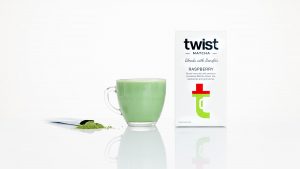 Ta dah! Introducing our newest Macha blend, Raspberry Matcha. A fabulous pairing of earthy premium matcha powder with tart raspberries and goji berries, this blend is delicious as a latte, on ice, or added to a smoothie. Raspberries are high in fibre, great for promoting eye health and are a source of antioxidants.
Ta dah! Introducing our newest Macha blend, Raspberry Matcha. A fabulous pairing of earthy premium matcha powder with tart raspberries and goji berries, this blend is delicious as a latte, on ice, or added to a smoothie. Raspberries are high in fibre, great for promoting eye health and are a source of antioxidants.
If you think there are too many to choose from, why not try our Matcha Tasting Menu. These offer a great opportunity to try all matcha blends and they make fabulous gifts for lovers of premium matcha.
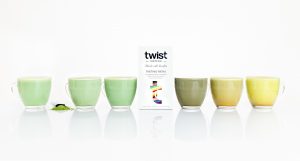
How to prepare Matcha
Hot
Preparing matcha is not as difficult as you think. As with any tea we believe it is best to start with premium Matcha. Measure your Matcha into your cup or bowl, one Twist sachet, or approximately 1 teaspoon per serving. Sift the powder to break up any lumps.
Next, fill your kettle with fresh (filtered, if possible) water to boil. Once boiled, allow the water to cool to approximately 80 degrees Celsius.
Pour a small amount of the hot water onto the Matcha powder and whisk it carefully, making sure to dissolve all of the Matcha powder and to create a foamy layer on the top. To finish, top up your drink with more hot water, or with frothy milk for a bright green matcha latte, whisking as you pour.
One thing to keep in mind is that if you are drinking Matcha for its health benefits you might want to avoid adding dairy milk. Studies have shown that proteins present in cows’ milk can limit the protection Green Tea gives against cardiovascular disease. At Twist we really like Sproud, a pea-based milk alternative.
Cold
An iced Matcha latte can be made as per the instructions above, with a generous handful of ice cubes added at the end. Peppermint Matcha is particularly delicious with ice. Or, if you are looking to wow some guests, how about serving them a party trick layered iced matcha latte?
Matcha recipes
Matcha is so versatile as a cooking ingredient and we love to experiment with new ways to include Matcha in our diet. You can try sprinkling matcha powder into your morning porridge or smoothie for an energy boost or try some of our recipes.
Matcha pancakes
Fabulous for Pancake Day, or whenever a pancake craving seizes you, Matcha pancakes are a super quick way to include matcha in your cooking. Our pancakes were made using Cocoa Matcha, but you could easily substitute this for a different Matcha blend.
Chocolate chia Matcha pudding
Delicious served for breakfast or dessert, our chocolate chia matcha pudding recipe has been adapted from Heat Free and Healthy by Katharine Tate. Cocoa Matcha or Turmeric Cocoa Matcha are recommended for this recipe.
Homemade granola
Packed full of nutritious oats, nuts, seeds, dried fruit, and, of course, Matcha, our homemade granola makes for a wholesome cereal, or as a yogurt topping.
Carrot, ginger and turmeric matcha soup
A warming and flavoursome soup, perfect for a cold winter’s day. Carrot, ginger and turmeric matcha soup is packed full of anti-inflammatory properties and will provide you with a good dose of antioxidants, including Vitamin C. Turmeric Matcha is our choice for this immune boosting soup.
Chocolate Matcha strawberries
A wonderful way to make the most of strawberry season. Pick your own juicy strawberries at your local farm or grab a punnet from the green grocers and whip up a batch of chocolate Matcha strawbs for a summer treat.
Universitea
What comes to mind when you think of quintessential British meals? Many would agree that fish and chips, bangers and mash, roast dinners, and of course, cream teas would top that list. Cream teas are perfect for sharing with friends and family on warm summer afternoons. As today is National Cream Tea Day, we thought we should address the question of what exactly is in a cream tea? You might also like to know; how do I make a cream tea? Should the cream be spread first, or the jam? And most importantly, what is the best tea to serve with a cream tea? Please read on to discover the answer to these pressing questions, and more.
The history of cream tea
It is thought that the earliest form of cream tea was enjoyed at Tavistock Abbey, Devon, in the eleventh century[i]. The abbey had been damaged during a Viking attack and, according to Devon historians, the labourers were offered bread with cream and jam to sustain them while they worked. Of course, tea was not introduced into Britain until the seventeenth century so the Abbey builders may well have been drinking ale with their meal, which is not how we picture a cream tea today!
So, what is in a cream tea?
Cream tea as we know it today is made up of freshly made scones, warm from the oven, broken open by hand and layered with a fruity jam and thick clotted cream. There is debate amongst cream tea purists as to whether the jam should be applied first, or the cream. Whichever way you prefer, the scones must be accompanied with a pot of piping hot tea. Traditionally, that tea might be a blend such as Twenty Four Seven or Afternoon Perks. At Twist we have been hard at work in our blending room and have come up with a new taste sensation: the aptly named Cream Tea. A mix of Sri Lankan black tea, apple pieces, hibiscus, elderberries, rosehip and freeze-dried strawberries, this blend is the perfect accompaniment to a cream tea.
Is it afternoon tea or cream tea?
One of the eight times of the day to enjoy tea, cream tea refers to scones with jam and clotted cream, served with tea. Although a cream tea is traditionally enjoyed in the afternoon, it differs from afternoon tea in that it does not include finger sandwiches or pastries. Sometimes it’s the simple pleasures that are the best!
How do I make cream tea?
During the first lockdown in 2020, there was a surge in Google searches for cream teas and afternoon teas available for delivery, as people sought ways to cheer themselves and loved ones up[ii]. In 2021 our options have broadened, and we can now choose to go out for our cream tea treats if we wish. We can also have our friends and family over, which means we can make a cream tea to share in our own homes.
In celebration of National Cream Tea Day, we have whipped up a batch of scones in the Twist kitchen. We’ve added our own Twist to the recipe by infusing the butter with our new tea blend, Cream Tea. The result is a light and fluffy scone with a subtle tea flavour that is delicious topped with strawberry jam and clotted cream. Don’t forget to brew yourself a pot of Cream Tea to enjoy with your scones!
For a stronger tea flavour, try adding a handful of tea-soaked sultanas to your scone dough.
Cream Tea infused scones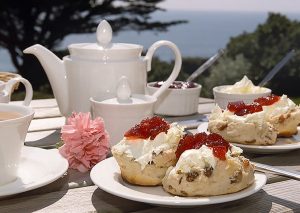
Makes approximately 10 medium sized scones.
Preparation time: 30 minutes
Cooking time: 10-15 minutes
Ingredients
- 250g self-raising flour
- 1 teaspoons baking powder
- 1 teaspoon cream of tartar
- 60g butter
- 25g golden caster sugar
- approximately 100ml buttermilk
- 3 tea bags Twist’s Cream Tea
Method
1. Preheat oven to 220°C/200°C fan forced.
2. Line one baking tray with baking paper.
3. In a saucepan, heat the butter until just liquid, before adding the Cream Tea leaves and keeping on a low heat for 5 minutes. Remove the butter from the heat and allow to sit for another 5 minutes, or longer if you prefer a stronger flavour. Sieve the tea leaves from the butter (try to get as much of the butter out, but don’t worry too much as some butter loss is inevitable) and allow to cool until the butter is back to room temperature.
4. In a mixing bowl, add the flour and baking powder. Set a small amount of butter to the side for brushing the scones before baking. Rub in the butter with your fingertips until the mix resembles breadcrumbs. Stir in the sugar.
5. Pour in the buttermilk and combine to form a dough.
6. Scoop out the dough onto a lightly floured surface. Use a rolling pin to roll it out until approximately 1-2cm thick. Cut your scones with a fluted 5cm diameter cutter (try not to twist the cutter as you do this) to create medium-sized scones and place on the baking trays. Brush the tops with the left-over butter/tea mix.
7. Bake in the oven for 12-15 minutes, or until golden in colour.
8. Enjoy with friends or family straight from the oven with clotted cream, fruity jam and of course, a piping hot pot of tea.
For the all-important pot of tea, ensure you have a caddy of Twist’s premium hand blended tea at the ready. We suggest our new blend, Cream Tea, but you may prefer one of our other teas. Black teas, Green teas and Rooibos teas are all recommended for enjoyment with a cream tea.
Devon cream tea vs Cornish cream tea
While cream teas can be found in many tearooms across the UK, there is a long-standing argument between the counties of Cornwall and Devon as to the correct method of assembling your scone. If you order a cream tea in Cornwall, they will insist that the jam goes first, with cream on top. But venture over the border to Devon, and it’s a different story. The Devon cream tea method is for cream to go first, then jam.
Phew. It might just sound like a storm in a teacup to many, but this issue causes much debate amongst scone afficionados. If you are still not sure, why not follow the Queen’s example. According to a former Royal Family chef, the Queen prefers her scones with jam applied first and cream on top[iii]. Whether you decide to apply jam first to your scone, or cream, whatever you do, etiquette dictates that you must never use whipped cream!
So, there you have it, the low down on the humble cream tea. How will you enjoy yours on National Cream Tea Day?
https://en.wikipedia.org/wiki/Cream_tea
[ii] https://www.bbc.co.uk/news/uk-52771095
[iii] https://www.independent.co.uk/life-style/food-and-drink/queen-scones-jam-cream-what-goes-first-debate-cream-tea-outrage-a8260686.html
Universitea
Did you know that after water, tea is the most consumed beverage in the world? According to the UK Tea and Infusions Association there are over 100 million cups of tea consumed in the UK per day[i]. There is a really cool counter on their website showing the number of cups continually being devoured – the counter leaps about 1200 per second. This accounts for all types of tea: black, green, white, yellow, herbal.
First drink of the day? A cup of tea. Approaching a state of hypothermia? Reach for that thermos of tea. Feeling hot? I know people who swear a cup of tea will cool them down. Going into shock due to a traumatic event? You will be encouraged to drink hot, sweet tea. In need of comfort? You guessed it, have a cup of tea. Catching up with friends, yep, tea is the drink of choice. Unless it’s night-time and you are in a pub, but that’s another story…
Out of all the available types of tea, black tea is one of the most popular in the UK. What is the big deal about black tea? Why is it so popular? I do happen to know people (well, two to be exact) who do not like black tea, never have, probably never will. But they are in the minority in the UK. It is almost socially unacceptable to say you don’t want a cuppa, especially if you are British. Tea is our go-to drink in so many situations we don’t often give it much thought.
We might not all agree on what is the best time of day to enjoy tea but it is likely that we take the humble cuppa for granted. At Twist we decided it was high time that we addressed this by sharing our collective knowledge on all things black tea:
What is black tea?
Many people ask, is black tea the same as regular tea? Black tea goes by many names: a cuppa, a brew, builders tea, to name a few. In the UK, when we talk about a ‘cup of tea’ we usually mean a breakfast tea blend, whether it be English, Scottish, or Irish.
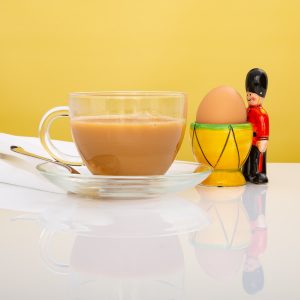 After water, black tea is one of the most popular beverages in the world[ii]. Black tea is a drink made from the oxidised leaves of the Camellia sinensis plant. This modest plant is responsible not only for black tea, but also green, white and yellow teas. To make black tea, the leaves are picked and withered before being rolled, oxidised (exposed to air), and finally, dried. The dried leaves are sorted and graded by size (whole leaf through to dust) and prepared for packaging. At Twist we select only the finest whole leaf tea and our tea is hand blended to ensure it reaches the consumer in pristine condition. The term ‘black tea’ comes from the colour of the leaves once oxidised. It is called black tea whether we add milk or not. In China black tea is called ‘red tea’, due to the colour of the drink that is brewed from these leaves.
After water, black tea is one of the most popular beverages in the world[ii]. Black tea is a drink made from the oxidised leaves of the Camellia sinensis plant. This modest plant is responsible not only for black tea, but also green, white and yellow teas. To make black tea, the leaves are picked and withered before being rolled, oxidised (exposed to air), and finally, dried. The dried leaves are sorted and graded by size (whole leaf through to dust) and prepared for packaging. At Twist we select only the finest whole leaf tea and our tea is hand blended to ensure it reaches the consumer in pristine condition. The term ‘black tea’ comes from the colour of the leaves once oxidised. It is called black tea whether we add milk or not. In China black tea is called ‘red tea’, due to the colour of the drink that is brewed from these leaves.
History and evolution of black tea
First discovered in China, tea is now grown in several tropical regions across the world. It is no big deal to buy tea from your local supermarket or café. But it wasn’t always this simple. For hundreds of years China held the monopoly on tea growth and production and kept the entire process shrouded in secrecy[iii]. Following the Opium Wars and ceding of Hong Kong to Victorian Britain, Britain took stock of their rocky relationship with China and became concerned about potentially losing their precious tea supply. A plot was hatched to steal premium quality seeds from the best Chinese tea plantations and grow them in British India, to ensure an ongoing supply of tea.
Fortunately for Britain, the plot worked, and Victorians were able to continue their love affair with tea. Of course, the story of the evolution of tea doesn’t end here but we will move on to look at the various types of black tea available.
How many types of black tea are there?
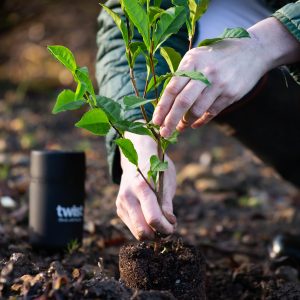 Tea is now grown in many regions across the world and each region produces tea that has its own distinct colour, aroma, and flavour. Currently the largest producers of black tea are India, Sri Lanka, and Africa. The most well-known teas produced in these countries include Assam, Ceylon, Darjeeling and Kenyan teas.
Tea is now grown in many regions across the world and each region produces tea that has its own distinct colour, aroma, and flavour. Currently the largest producers of black tea are India, Sri Lanka, and Africa. The most well-known teas produced in these countries include Assam, Ceylon, Darjeeling and Kenyan teas.
The two types of black tea used most often in Twist Tea blends are Assam and Ceylon.
What is Assam tea?
Assam tea is tea grown in the Assam region of India. Bordered by Bangladesh and Bhutan, the region has a climate ideal for tea production: cool, dry winters, and a warm, humid rainy season. Widely considered to be of a very high quality, Assam tea is often used in popular ‘everyday’ tea blends as it has a rich, full-bodied taste.
Assam tea is used in several Twist Teas blends including Twenty Four Seven, Double Black, Breakfast Boost, Orange Chai and Sweet Chai of Mine.
Ceylon tea is tea cultivated on the island of Sri Lanka, formerly known as Ceylon. Offering a variety of flavour and colour due to the range of altitudes that it is grown on, Ceylon tea is known for its versatility. Ceylon tea is traditionally used in English breakfast tea blends as it has the strength desired to accompany a full English breakfast.
Ceylon tea is a favourite at Twist Teas and is used in many blends including Afternoon Perks, Breakfast Boost, Classic Earl, Earl Great, Chocolate Chai, Orange Chai, Vanilla Chai, and All Day Decaf.
At Twist we are passionate about creating top quality premium teas that offer something different than our competitors. Every Twist Tea blend is created from the finest, ethically sourced whole-leaf ingredients, not the dusty dregs you often find in less premium tea brands. Our plastic free tea bags are hand blended in the UK and hand packed in plastic free packaging. Clearly, we believe our black tea is the best available, but which black tea blend is the right one for you?
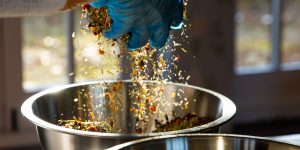
At Twist Teas we have close to 20 black tea blends to choose from and even we sometimes struggle to decide. Here is a selection of our favourites:
English breakfast tea (or Scottish or Irish) is often a blend of full-bodied teas such as Assam, Ceylon and Kenyan. Usually taken with milk, English breakfast tea is believed to be the perfect accompaniment to a full English breakfast.
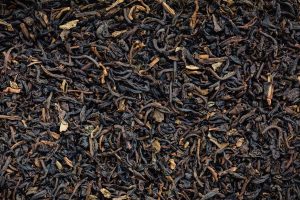 At Twist Teas we have raised the bar with our Breakfast Boost by hand blending Assam and Ceylon black teas, with yerba mate for enhanced mental performance and Siberian ginseng for an additional caffeine hit. The ideal luxury black tea brew to get you up and running in the morning, Breakfast Boost will provide you with an energy lift minus the energy crash that inevitably follows a strong coffee.
At Twist Teas we have raised the bar with our Breakfast Boost by hand blending Assam and Ceylon black teas, with yerba mate for enhanced mental performance and Siberian ginseng for an additional caffeine hit. The ideal luxury black tea brew to get you up and running in the morning, Breakfast Boost will provide you with an energy lift minus the energy crash that inevitably follows a strong coffee.
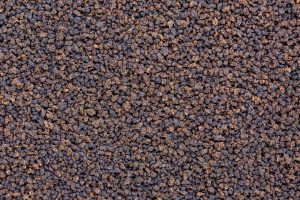 Looking for a black tea blend to give you an energizing boost at any time of the day? Twist’s Twenty Four Seven is a blend of the finest, organic Assam and Kenyan black teas carefully cut to produce a strong and delicious tea in just two minutes. One of our most popular black teas, award-winning Twenty Four Seven has been designed for all-day enjoyment. Think of it as your new go-to black tea blend! Not only is Twenty Four Seven the ideal brew to turn to for a hot cuppa, it also makes the perfect Long Island Iced Tea Cocktail.
Looking for a black tea blend to give you an energizing boost at any time of the day? Twist’s Twenty Four Seven is a blend of the finest, organic Assam and Kenyan black teas carefully cut to produce a strong and delicious tea in just two minutes. One of our most popular black teas, award-winning Twenty Four Seven has been designed for all-day enjoyment. Think of it as your new go-to black tea blend! Not only is Twenty Four Seven the ideal brew to turn to for a hot cuppa, it also makes the perfect Long Island Iced Tea Cocktail.
Earl Grey tea is a black tea, traditionally a Chinese tea such as Keemun, that is flavoured with bergamot. Thought to be named after Charles Grey, the 2nd Earl Grey, and British Prime Minister during the 1830s[iv], Earl Grey tea is reputed to have been created to disguise the flavour of the water at the Earl’s home.
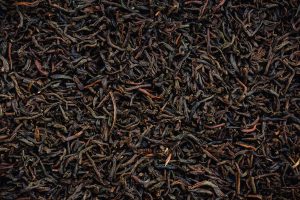
Classic Earl is Twist’s take on this all-time great tea. Our award-winning brew combines high-grown Sri Lankan tea with smoky Chinese Keemun black tea and natural Bergamot flavouring. Infuse in boiling water for 3-5 minutes and enjoy with or without milk.
If you love Classic Earl, you will also want to try Earl Great to see how Twist takes this elegant tea to the next level.
Best Chai tea
Chai, or spiced tea, became popular in South Asia in the early twentieth century. It is made from boiling black tea, ideally a full-bodied type such as Assam, in milk and water with cinnamon, cardamom, cloves, ginger and peppercorns.
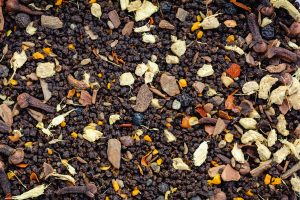 To create our aromatic Sweet Chai of Mine we hand-blend Assam tea with traditional spices as well as turmeric, for a modern Twist. Simply immerse a Sweet Chai of Mine tea bag in boiling water for 3 minutes and serve with milk and sugar or honey. Alternatively, you can make a chai latte by brewing the tea in a third of a cup of boiling water and topping with frothy milk. Delicious!
To create our aromatic Sweet Chai of Mine we hand-blend Assam tea with traditional spices as well as turmeric, for a modern Twist. Simply immerse a Sweet Chai of Mine tea bag in boiling water for 3 minutes and serve with milk and sugar or honey. Alternatively, you can make a chai latte by brewing the tea in a third of a cup of boiling water and topping with frothy milk. Delicious!
If you love Sweet Chai of Mine, you will want to try our other chai teas.
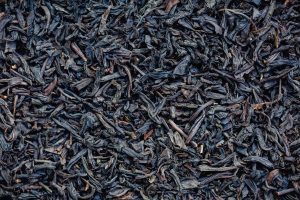 Lapsang Souchong is black tea that has been smoke dried over a fire. Believed to have been created in China during the Qing Dynasty as early as the mid-1600s, Lapsang Souchong has a distinctive aroma and flavour and can be served with or without milk.
Lapsang Souchong is black tea that has been smoke dried over a fire. Believed to have been created in China during the Qing Dynasty as early as the mid-1600s, Lapsang Souchong has a distinctive aroma and flavour and can be served with or without milk.
At Twist we describe our Wholly Smoke as the Marmite of our teas: people either love it or they hate it. If you fancy drinking a bonfire, this is the perfect smoky blend for you! Add some cold Wholly Smoke to a measure of whisky, a touch of maple syrup and a splash of bitters, for a fiery, smoky Old Fashioned.
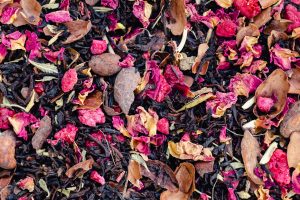 Sometimes a special occasion arises that calls for an exceptional tea blend. At Twist Teas we pride ourselves on our innovative approach to pairing flavours that some may consider unusual. Many of our tea blends feature a Twist, but we think this particular blend is something really special. Raspberry Choc Kiss is a heady combination of Ceylon and Chinese black tea, with the tartness of raspberry, the fragrance of rose petals and a subtle hint of hot chocolate. And just when you think it can’t get any better, there is also a touch of Damiana in this blend, a herb believed to be an aphrodisiac by some indigenous Central and South American cultures.
Sometimes a special occasion arises that calls for an exceptional tea blend. At Twist Teas we pride ourselves on our innovative approach to pairing flavours that some may consider unusual. Many of our tea blends feature a Twist, but we think this particular blend is something really special. Raspberry Choc Kiss is a heady combination of Ceylon and Chinese black tea, with the tartness of raspberry, the fragrance of rose petals and a subtle hint of hot chocolate. And just when you think it can’t get any better, there is also a touch of Damiana in this blend, a herb believed to be an aphrodisiac by some indigenous Central and South American cultures.
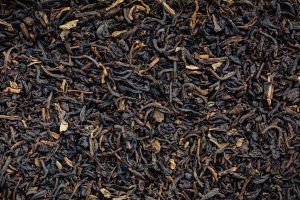 While caffeine is certainly helpful in giving us an energy boost when we most need it, sometimes we need to reduce the amount of caffeine we consume for health reasons, such as during pregnancy, or if we are finding it difficult to sleep. Decaffeinated tea makes it possible to reduce our caffeine intake without abandoning black tea altogether.
While caffeine is certainly helpful in giving us an energy boost when we most need it, sometimes we need to reduce the amount of caffeine we consume for health reasons, such as during pregnancy, or if we are finding it difficult to sleep. Decaffeinated tea makes it possible to reduce our caffeine intake without abandoning black tea altogether.
Twist’s All Day Decaf, another award-winning tea comprises premium, organic Sri Lankan Black Tea treated with liquid carbon dioxide to remove caffeine. This harmless process does not diminish the flavour. Other decaf teas are rinsed in Methylene Chloride, primarily used as an industrial solvent and paint stripper. Fancy a cup? No, us neither…
If you think there are too many to choose from, why not try our pick and mix tasting menu. These offer a great opportunity to try six delicious teas of your choice and they make fabulous gifts for lovers of premium teas.
How good is black tea for you?
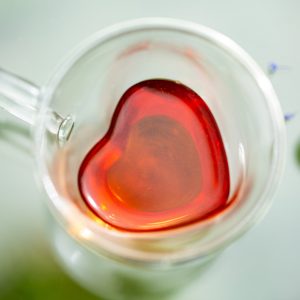 You may ask is it healthy to drink black tea every day? Of course, it is important to stay hydrated by drinking 8+ glasses of water per day, but did you know that tea in moderation (maximum of 3 cups of caffeinated tea) can count towards this requirement? Black tea doesn’t hydrate as well as water, but it does help us to increase our liquid intake, which can only be a good thing.
You may ask is it healthy to drink black tea every day? Of course, it is important to stay hydrated by drinking 8+ glasses of water per day, but did you know that tea in moderation (maximum of 3 cups of caffeinated tea) can count towards this requirement? Black tea doesn’t hydrate as well as water, but it does help us to increase our liquid intake, which can only be a good thing.
Aside from quenching our thirst, a simple cup of black tea can also have some amazing health benefits[v]:
Health benefits of black tea
Heart health – animal studies have shown that an antioxidant present in black tea called theaflavin can help reduce cholesterol, thereby supporting your heart health.
Blood sugar – theaflavin also helps to lower blood sugar levels, good news for those at risk of diabetes.
Gut health – black tea has antimicrobial properties that can help improve your gut health, thereby strengthening your immune system.
Anti-cancer properties – the polyphenols contained in black tea are thought to reduce the risk of developing cancer as they can have an inhibiting effect on cancerous cells.
Energy boosting – black tea also contains an amino acid called L-theanine. L-theanine has been proven to help focus as it facilitates alpha activity within the brain. It is one of the main reasons as to why it is often reported that tea gives a more stable boost of energy in comparison to coffee.
Are there any side effects of black tea?
Black tea naturally contains the stimulant caffeine. Excessive consumption (more than 4-5 cups per day) may result in symptoms including jitteriness, headache, difficulty in sleeping or an irregular heartbeat. If you think you may be sensitive to caffeine, or if you are pregnant, we recommend that you consult your healthcare professional about the quantity of black tea you should consume.
How to make the perfect brew
There is much debate around how to make a good black tea. Is loose leaf best, or are bags just as good? Milk first, or water? What type of milk? Is it ok to sweeten your tea, or completely sacrilegious? We try not to be too judgmental at Twist Teas, but we believe the best way to make the perfect brew is to start with premium tea. After that, all bets are off, but this is how we think the perfect brew is made:
First, fill your kettle with fresh water to boil. Filtered water, such as with a Brita filter as used by the UK Tea Association[vi], will give the best result, but plain tap water is fine too. Fresh water is better than re-boiled water as boiling removes the oxygen from the water and affects the flavour of the tea. Once boiled, pour the water into your tea ware (teapot, cup/mug or travel cup) to warm it up.
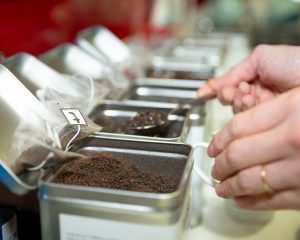 Once your tea ware is warmed (within 1 minute), tip this water out and measure your tea carefully (1 tea bag, or 1 teaspoon of loose-leaf tea per cup). Pour the hot water onto the tea and infuse for the recommended brewing time. Some people may be concerned that putting hot water directly onto tea will burn it, but if you have waited the 1 minute after the water has stopped boiling, the temperature should just about be perfect (approximately 95°).
Once your tea ware is warmed (within 1 minute), tip this water out and measure your tea carefully (1 tea bag, or 1 teaspoon of loose-leaf tea per cup). Pour the hot water onto the tea and infuse for the recommended brewing time. Some people may be concerned that putting hot water directly onto tea will burn it, but if you have waited the 1 minute after the water has stopped boiling, the temperature should just about be perfect (approximately 95°).
Once brewed, remove the tea, and add milk if you prefer. If you have brewed your tea according to our recommended time, there won’t be any bitterness, but if you do like to sweeten your tea that is up to you!
Tea Lattes
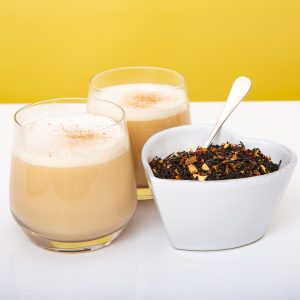 Twist has several teas that work well as tea lattes, particularly our Chai blends. Tea lattes are made by brewing the tea in frothy milk and can be enjoyed both hot, or cold over ice. Recently we converted our Mint Choc Chip into a latte with Sproud, a plant-based milk It was delicious!
Twist has several teas that work well as tea lattes, particularly our Chai blends. Tea lattes are made by brewing the tea in frothy milk and can be enjoyed both hot, or cold over ice. Recently we converted our Mint Choc Chip into a latte with Sproud, a plant-based milk It was delicious!
Cold
Black tea can also taste great cold, especially during the warmer summer months. It can be made easily enough into an iced tea, and with a little extra effort, can be transformed into a Long Island Iced Tea.
Kombucha is another option that uses cold black tea. A fermented drink made from sweetened tea and a culture of bacteria and yeast called a ‘scoby’, kombucha is known to contain probiotics and thought to improve gut health.
Cooking/baking with tea
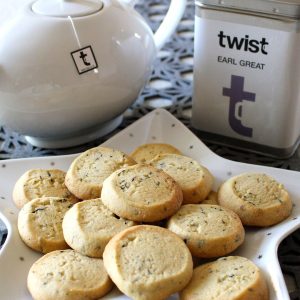 When we think of biscuits or cake and a cuppa, usually we think of these as being the perfect high tea partnership. But what about using tea in the biscuit? Our Earl Great shortbread biscuits use tea as the hero ingredient and the result is gorgeous.
When we think of biscuits or cake and a cuppa, usually we think of these as being the perfect high tea partnership. But what about using tea in the biscuit? Our Earl Great shortbread biscuits use tea as the hero ingredient and the result is gorgeous.
[i] https://www.tea.co.uk/
[ii] http://www.fao.org/economic/est/est-commodities/tea/en/#:~:text=Tea%20is%20the%20world’s%20most,first%20grew%20is%20not%20known.
[iii] For all the tea in China, Sarah Rose, Arrow Books, 2009, p. 29
[iv] https://en.wikipedia.org/wiki/Earl_Grey_tea
[v] https://www.ncbi.nlm.nih.gov/pmc/articles/PMC6512146/
[vi] https://www.ukteaacademy.co.uk/images/UKTAwhitepaper.pdf

